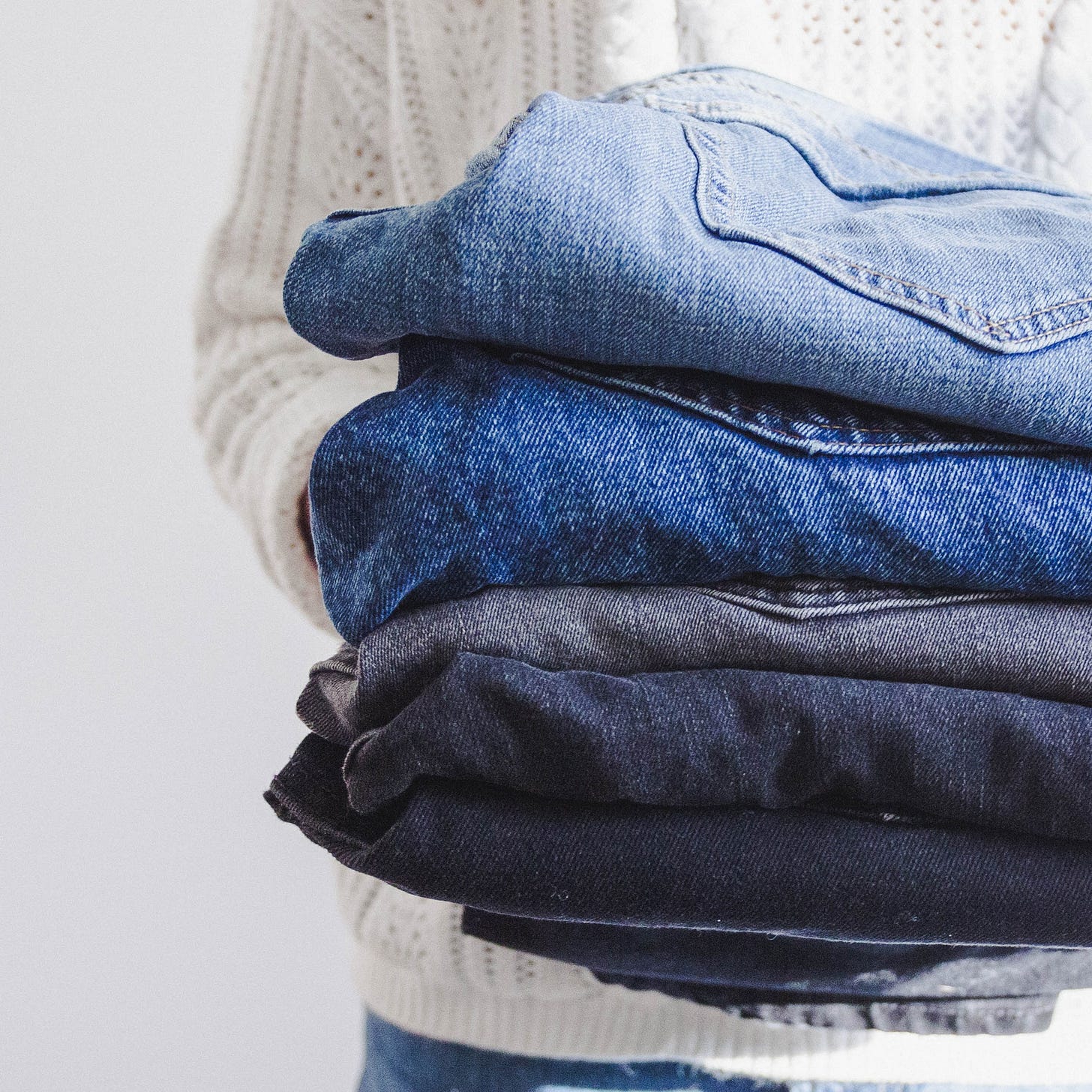Can we repurpose old clothes?
These 3 startups have got some innovative ideas

It takes 2700 litres to produce a single cotton T-shirt- that’s enough water for a person to consume for 900 days!
Textile Industry causes water, air and solid waste pollution- thanks to the chemicals used in the dyeing and finishing process.
And this is just half of the story!
When these clothes are discarded after use, they mostly end up in landfills and lie there for 200+ years- waiting to get decomposed.
So to get a piece of cloth that would be worn a few times, numerous limited resources are exploited.
Let’s see how these 3 startups are saving the planet by upcycling clothes ⬇️
I’ll buy something new…50 million tons of clothing are discarded every year. In the US, consumers dispose of 80% of their textiles directly into the garbage bin, which eventually ends up in landfills or oceans. If these textiles consist of polyester or nylon, they leach chemicals into the Earth. If they are incinerated instead, they become carcinogenic.
Unloved clothes get another chance…Evrnu, a Seattle-based textile-technology startup recycles old clothing and creates new yarn(thread used for sewing) for new clothing. To recycle the old clothing, the team does not chop it (which weakens the fabric) but rather melts it down like gold.
The discarded clothing, which consists of cotton and other fabrics is first converted into a pulp.
The pulp is processed through a filter and is converted into a premium fibre.
The fibre is then spun into yarn, dyed and then woven into the fabric- creating new clothes.
Harvesting cotton from old clothes…Their first commercially available technology, NuCycl is made by reforming blocks of cotton into new fibres. By reusing existing cotton fibres, it reduces the need to produce virgin cotton, which uses vast quantities of water and insecticides. Evrnu uses 98% less water than what is required for virgin cotton production.
Consistency in human habits…10000 miles away on the other side of the equator, the story is no different. Australia produces an estimated 3 million tonnes of textile for landfills every year. 75% of people on the continent throw away textiles each year and ~30% throw more than 10 pieces every year. When Graham Ross and Adrian Jones were starting BlockTexx, they realized that there’s no textile recycling industry in the country.
Where do people wear the same clothes?… The duo started with taking the clothes from charities but soon realized that as charities had a large variety of clothes, they needed an additional sorting process. So they looked for sources that had consistency in their clothes- hotels, hospitals and work uniforms. The clothes from these places have a consistent ratio of polyester and cotton (the 2 most common raw materials in the textile industry). This makes it easy to separate them and recycle them.
After washing and shredding, textiles are placed in a reactor, which separates cotton from polyester.
Polyester fibres are then melted into PET pellets and cellulose slurry can be dried into a powder form.
Polyester and cellulose produced can then be used to manufacture products like textiles, paints, cosmetics, pharmaceuticals & furniture.

Whose clothes am I sitting on?…The ‘Block’ part of the name comes from Blockchain. The company is using blockchain technology to make the entire process traceable. If the soiled hospital clothes from some hospital in Australia are being recycled and coming back to a hotel in Asia as a chair, the hotel staff would be able to track the entire movement.
Shop till you drop…The throwaway culture has unfortunately turned the entire planet into a trash land. Higher disposable incomes and affordable fast fashion ensure that we don’t think twice before getting rid of our old clothes. We produce 100 billion garments every year and this is estimated to double by 2050.
Twofer…Leveraging her experience of turning old coffee beans into new products, Alina Bassi started Kleiderly, which converts textile waste into new durable materials. Apart from reducing textile waste, their other objective is to reduce oil-based plastic.
Through a multi-step process, Kleiderly converts old clothes into an alternative to oil-based plastic.
This can be used to create materials like furniture, coat hangers and even anti-theft security tags.
These products can then be circulated back in the fashion industry, creating a truly circular economy.
You’re still wearing it, just differently…The company has launched the world’s first pair of sunglasses made from recycled textiles. They source textiles locally in Germany from different charity organizations and fashion retailers and produce their eyewear in Italy. To counteract overproduction, the glasses are made to order and arrive in 60 days.
🔍Want to test your knowledge of the world of clothing?
Click below to solve it.↘️
Here are the responses to the last week’s crossword
📢 Shoutout to Paridhi who helped me write this edition.
Hit that 💚 if you liked today’s issue. We reached 200 subscribers with this issue.
You can share 🤷🏽♂️ Not My Problem on Social Media by clicking the button below. That would mean a lot. Thanks and see you next week😄









